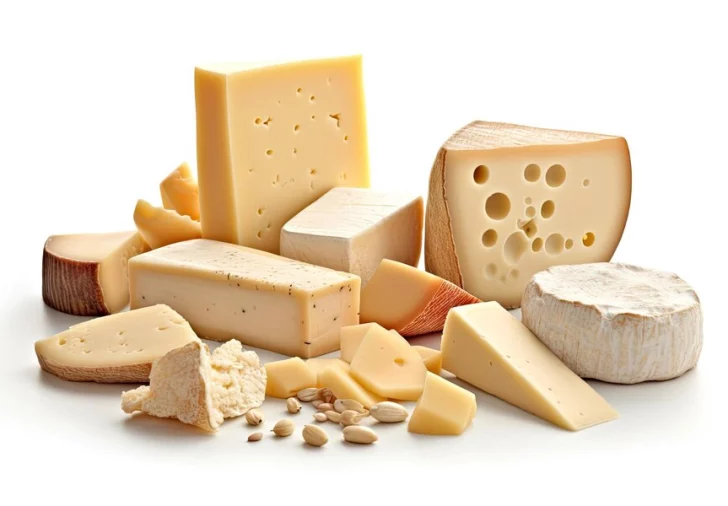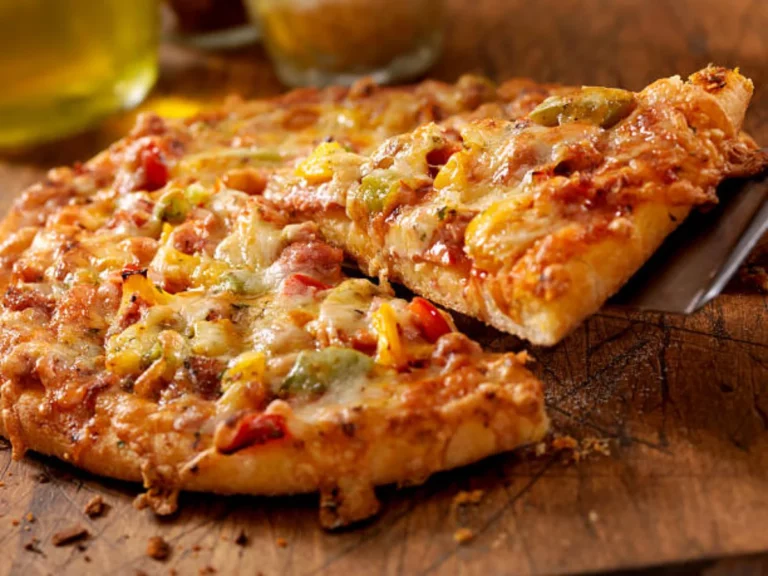Pizza and cheese share a bond that’s as timeless as it is tasty. This article dives into the heart of one of the most pivotal questions in the culinary world: What is the best cheese for pizza? We’ll navigate through the meltability, stretchability, and flavor balance that transform a good pizza into a great one, and provide insights into selecting the right cheese for our homemade pizza masterpiece.
Table of Contents
ToggleHow Do We Choose Cheese for Pizza?
Meltability and Stretchability
At the heart of a great pizza cheese lies its ability to melt and stretch. The perfect melt envelops the toppings in a creamy embrace, ensuring that flavors merge seamlessly on the pizza dough. Meanwhile, the right stretchability offers a visually satisfying experience and a delightful texture with every bite. This interplay between meltability and stretchability not only enhances the enjoyment of the pizza but also plays a crucial role in achieving that iconic pizza pull we all love. These properties are critical because they directly influence the pizza’s overall sensory appeal, making the choice of cheese a key consideration in pizza preparation.
Flavor Balance
The symphony of flavors on a pizza comes from the harmonious balance between the cheese, tomato sauce, and toppings. Cheese acts as the canvas, blending its own taste with the tangy tomato sauce and the array of toppings, from pepperoni to fresh basil. The choice of cheese can either elevate the pizza to new heights of flavor or clash with the other elements. It’s essential to select a cheese that complements rather than competes with the pizza toppings and sauce, ensuring each slice offers a perfect blend of flavors. This balance is what turns a simple pizza into an unforgettable culinary experience.
Moisture Content
Moisture content in cheese influences how it cooks on pizza, affecting everything from the crispiness of the crust to the uniformity of cheese melting. High moisture cheeses, like fresh mozzarella, release more water as they cook, which can make the pizza dough soggy if not managed correctly. Conversely, low moisture mozzarella offers a drier texture and a more consistent melt, making it ideal for a golden, evenly cooked surface. Understanding the moisture level in cheese varieties is key to mastering the pizza-making process, as it helps ensure the desired outcome in terms of crust texture and cheese distribution.
Exploring What is The Best Cheese for Pizza?
1. Mozzarella Cheese
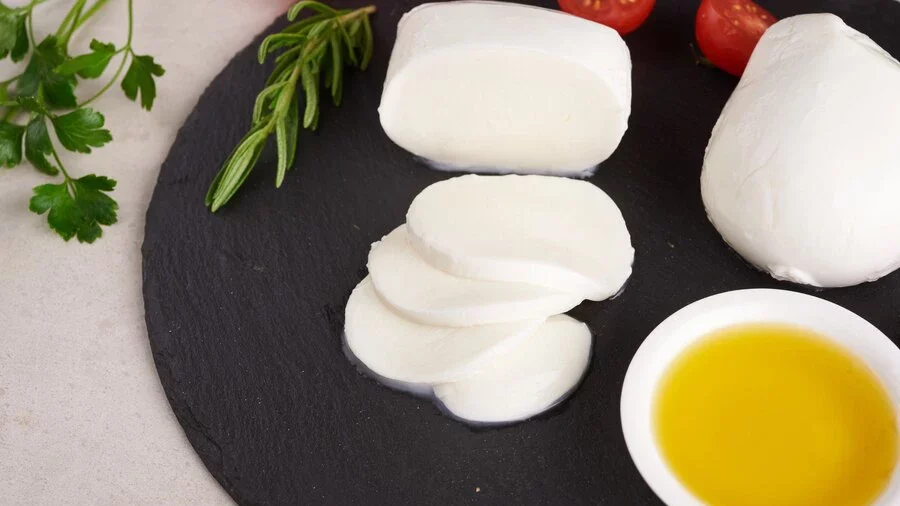
Mozzarella cheese is the most popular choice for pizzas around the world. It melts perfectly and has a pleasant taste. Mozzarella’s mild flavor mixes well with the other toppings, making every bite delicious. It’s truly the best cheese for pizza.
The contrast between fresh and low moisture mozzarella is significant; fresh mozzarella cheese offers a creamy, rich flavor with more moisture, while low moisture mozzarella provides a denser texture and a saltier taste, ideal for achieving that desirable stretchy cheese layer. Each type has its unique impact on the pizza, influencing both flavor and texture.
- Source of Milk: Made from cow’s milk, providing a classic and familiar taste.
- Texture: Smooth and creamy texture that melts in the mouth, creating a luxurious mouthfeel.
- Melting Ability: Melts beautifully, forming a gooey layer of cheese over the pizza.
- Stretchiness: Known for its excellent stretchiness, resulting in that iconic cheese pull.
- Flavor Balance: Offers a mild and milky flavor profile that complements a variety of toppings.
- Moisture Content: Moist and moist, ensuring a delightful burst of cheese with every bite.
2. Cheddar Cheese
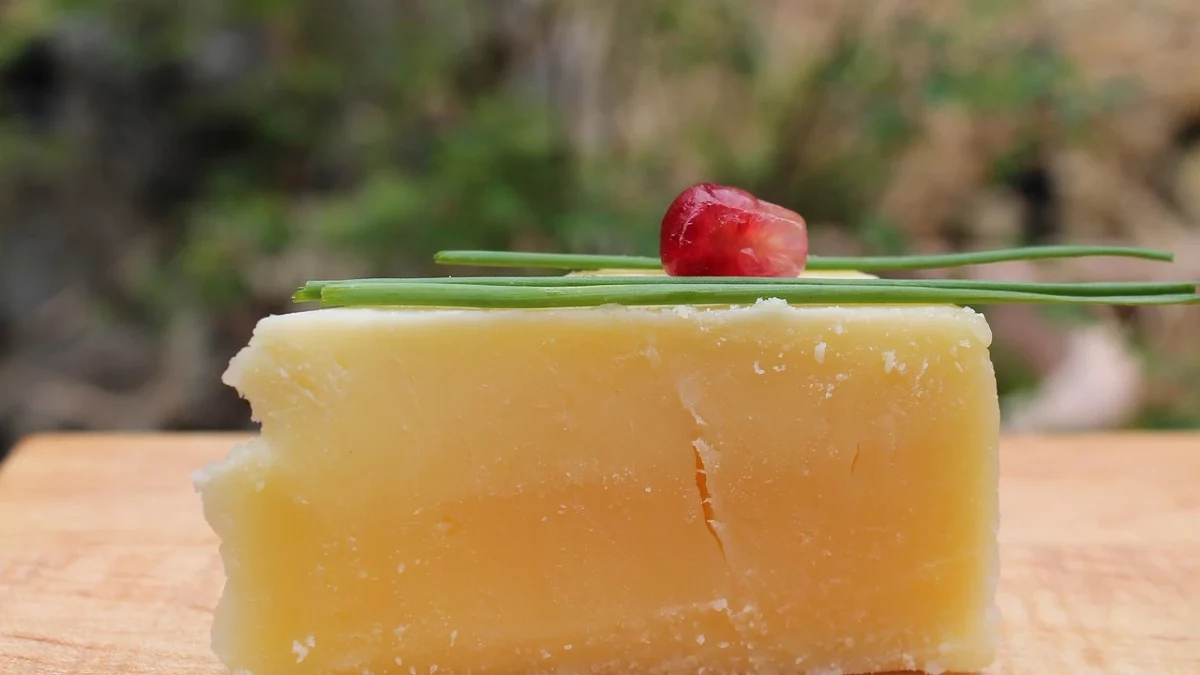
Cheddar cheese brings a bold, sharp flavor to pizzas, contrasting beautifully with the sweetness of the tomato sauce. Its distinctive taste adds depth and complexity to the pizza, making it a popular choice for those looking to experiment beyond traditional cheeses.
Cheddar’s rich flavor profile pairs well with a variety of pizza toppings, especially meats and vegetables, creating a hearty and satisfying meal. Understanding how to balance cheddar’s strong flavor can turn an ordinary pizza into an extraordinary one.
- Source of Milk: Crafted from cow’s milk, providing a rich and robust flavor.
- Texture: Firm and dense texture that adds a satisfying bite to the pizza.
- Melting Ability: Melts evenly, forming a smooth and creamy layer of cheese.
- Stretchiness: While not as stretchy as mozzarella, it offers a delightful melt that coats the toppings evenly.
- Flavor Balance: Offers a bold and sharp flavor profile, adding depth and complexity to the pizza.
- Moisture Content: Moderately moist, ensuring a moist and flavorful pizza experience.
3. Provolone Cheese

Provolone offers a smooth, creamy flavor with just the right hint of tanginess, making it a favorite for those seeking a milder flavor profile. Its excellent melting properties ensure a uniform cheese layer that complements both the pizza dough and toppings without overwhelming them.
Provolone’s versatility allows it to blend well with other cheeses, making it a staple in many cheese blends for pizza. The choice of provolone can elevate the subtle flavors of pizza, enhancing its overall taste.
- Source of Milk: Made from cow’s milk, offering a slightly tangy and nutty flavor.
- Texture: Smooth and creamy texture that melts beautifully over the pizza.
- Melting Ability: Melts smoothly, creating a velvety layer of cheese with a golden brown hue.
- Stretchiness: Offers moderate stretchiness, providing a satisfying cheese pull.
- Flavor Balance: Strikes a balance between sweet and tangy flavors, enhancing the overall taste of the pizza.
- Moisture Content: Moist and creamy, adding richness and depth to every bite.
4. Parmesan Cheese
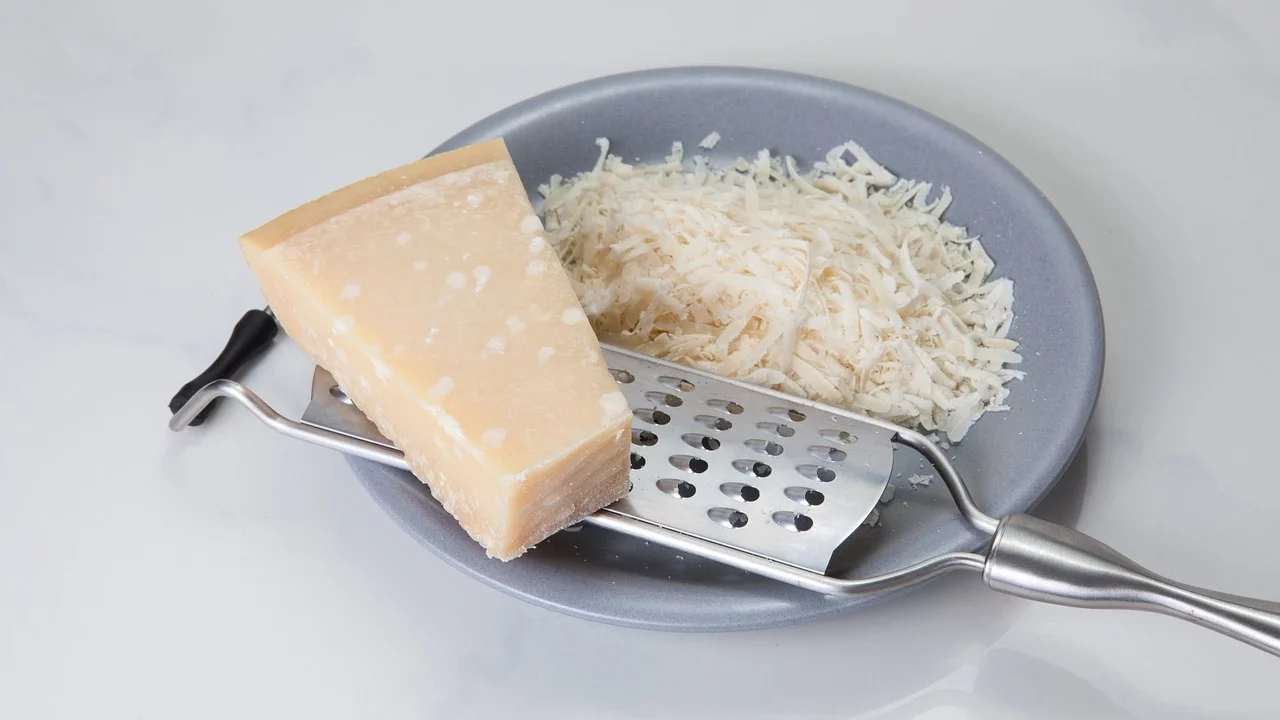
Parmesan cheese, with its nutty and salty undertones, is perfect for adding an extra layer of flavor. Sprinkled on top before serving, it introduces a delightful crunch and a burst of flavor that enhances the overall pizza experience.
Parmesan’s rich, umami-packed profile complements a wide range of toppings, making it an indispensable addition to any pizza. Its ability to add depth and complexity to the pizza’s flavor profile without melting into the background is what makes Parmesan a true culinary gem.
- Source of Milk: Crafted from cow’s milk, aged to perfection for a bold and intense flavor.
- Texture: Granular and crumbly texture that adds a delightful crunch to the pizza.
- Melting Ability: Does not melt like other cheeses, but instead browns beautifully, offering a crispy and savory topping.
- Stretchiness: Not known for its stretchiness, but offers a unique texture and depth of flavor.
- Flavor Balance: Boasts a rich and nutty flavor profile with salty undertones, enhancing the overall taste of the pizza.
- Moisture Content: Low moisture content, resulting in a concentrated and intense flavor experience.
5. Ricotta Cheese
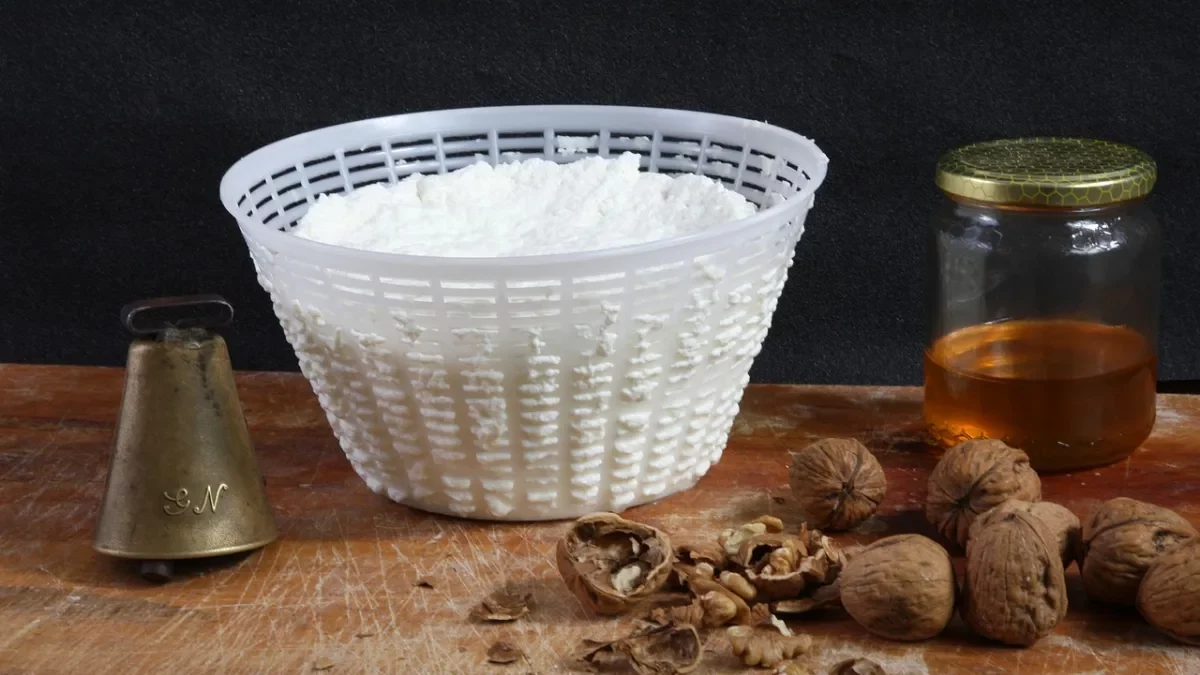
Ricotta introduces a creamy texture and delicate flavor to pizzas, setting the stage for a diverse taste experience. It pairs exceptionally well with lighter toppings and a drizzle of olive oil, offering a fresh alternative to the traditional pizza.
The inclusion of ricotta can transform a pizza into a rich, decadent dish, ideal for those looking to explore beyond classic pizza flavors. Its soft, spreadable consistency and mild taste make it a versatile cheese for innovative pizza creations.
- Source of Milk: Made from cow’s milk, offering a creamy and delicate flavor.
- Texture: Smooth and creamy texture that spreads effortlessly across the pizza crust.
- Melting Ability: Melts softly, blending seamlessly with other ingredients to create a luscious layer of cheese.
- Stretchiness: Not known for its stretchiness, but provides a luxurious creaminess to the pizza.
- Flavor Balance: Boasts a subtle sweetness and tanginess, complementing both sweet and savory toppings.
- Moisture Content: High moisture content, adding a moist and tender texture to the pizza.
6. Goat Cheese
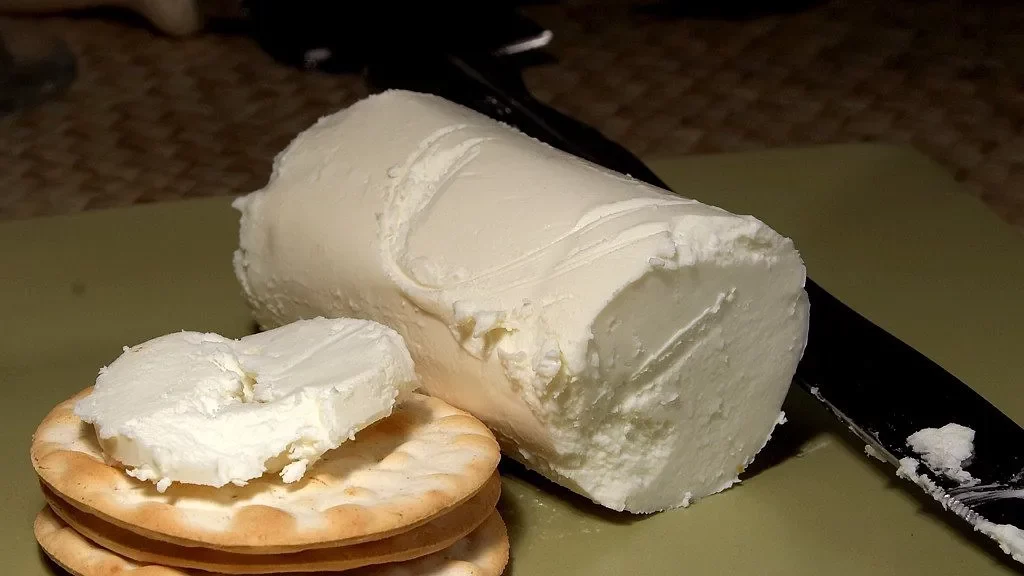
Goat cheese adds a tangy twist to traditional pizza flavors, bringing a unique flavor and creamy consistency to the table. Its distinct taste pairs well with sweeter toppings, like caramelized onions, balancing the pizza’s flavor profile.
The creamy texture of goat cheese enriches the pizza, offering a luxurious mouthfeel. This cheese is perfect for those looking to add a gourmet touch to their homemade pizza, providing a memorable dining experience with its bold flavors.
- Source of Milk: Crafted from goat’s milk, offering a tangy and slightly earthy flavor.
- Texture: Creamy and smooth texture that adds a luxurious touch to the pizza.
- Melting Ability: Melts smoothly, creating a velvety layer of cheese with a hint of caramelization.
- Stretchiness: Offers minimal stretchiness, but provides a creamy and decadent mouthfeel.
- Flavor Balance: Boasts a tangy and slightly acidic flavor profile, adding brightness and complexity to the pizza.
- Moisture Content: Moderate moisture content, ensuring a moist and flavorful pizza experience.
7. Buffalo Mozzarella
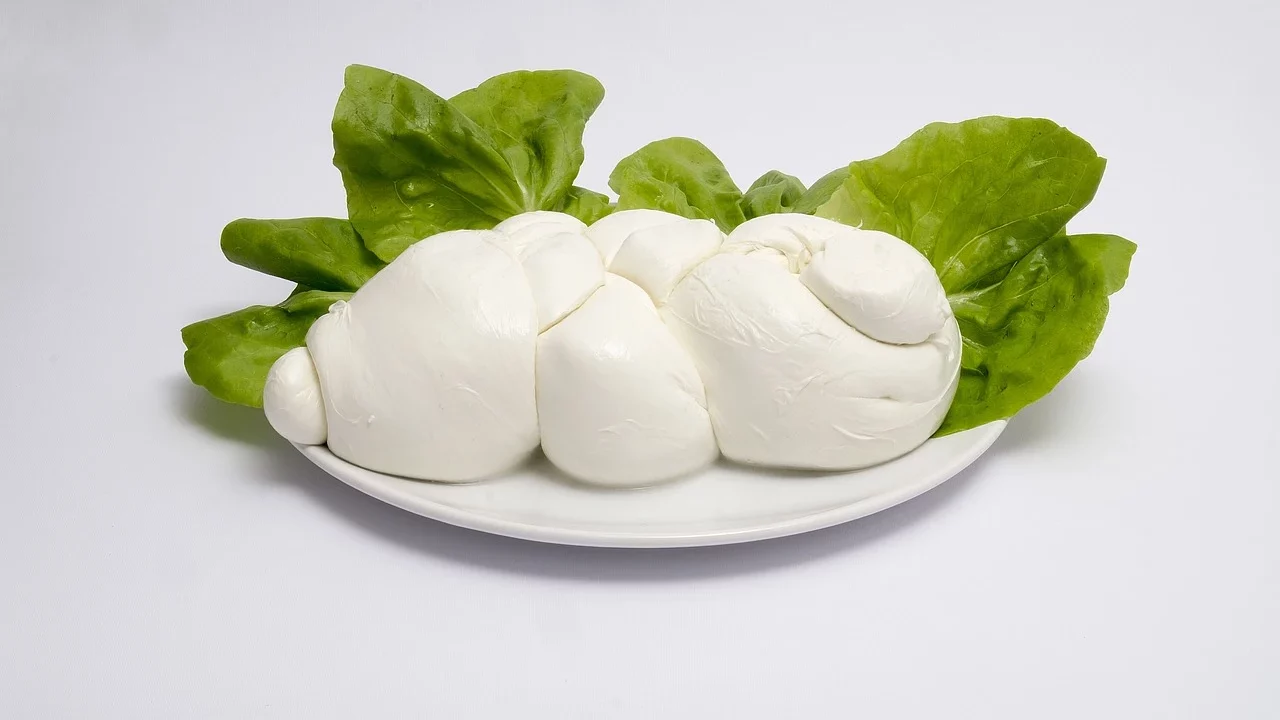
Buffalo mozzarella, with its rich flavor and creamy texture, is a deluxe choice for pizza enthusiasts. Originating from Italy, this cheese boasts a higher fat content, contributing to its luxurious taste and velvety mouthfeel.
Its ability to melt beautifully while retaining a delicate creaminess makes buffalo mozzarella a premium option for those seeking authenticity and depth of flavor in their pizza. This cheese elevates the pizza experience, offering a taste of Italy with every bite.
- Source of Milk: Buffalo mozzarella is made from the milk of water buffalo, while traditional mozzarella is typically made from cow’s milk. The use of buffalo milk gives buffalo mozzarella a distinct flavor and texture.
- Texture: Delicate and soft texture that melts beautifully over the pizza, creating a creamy and luxurious mouthfeel.
- Melting Ability: Melts seamlessly, forming a velvety layer of cheese that enhances the flavors of the toppings.
- Stretchiness: Offers excellent stretchiness, resulting in that coveted cheese pull that adds excitement to every bite.
- Flavor Balance: Boasts a subtle sweetness and milky richness, perfectly complementing the freshness of the toppings.
- Moisture Content: High moisture content, ensuring a moist and succulent pizza experience.
8. Gouda Cheese
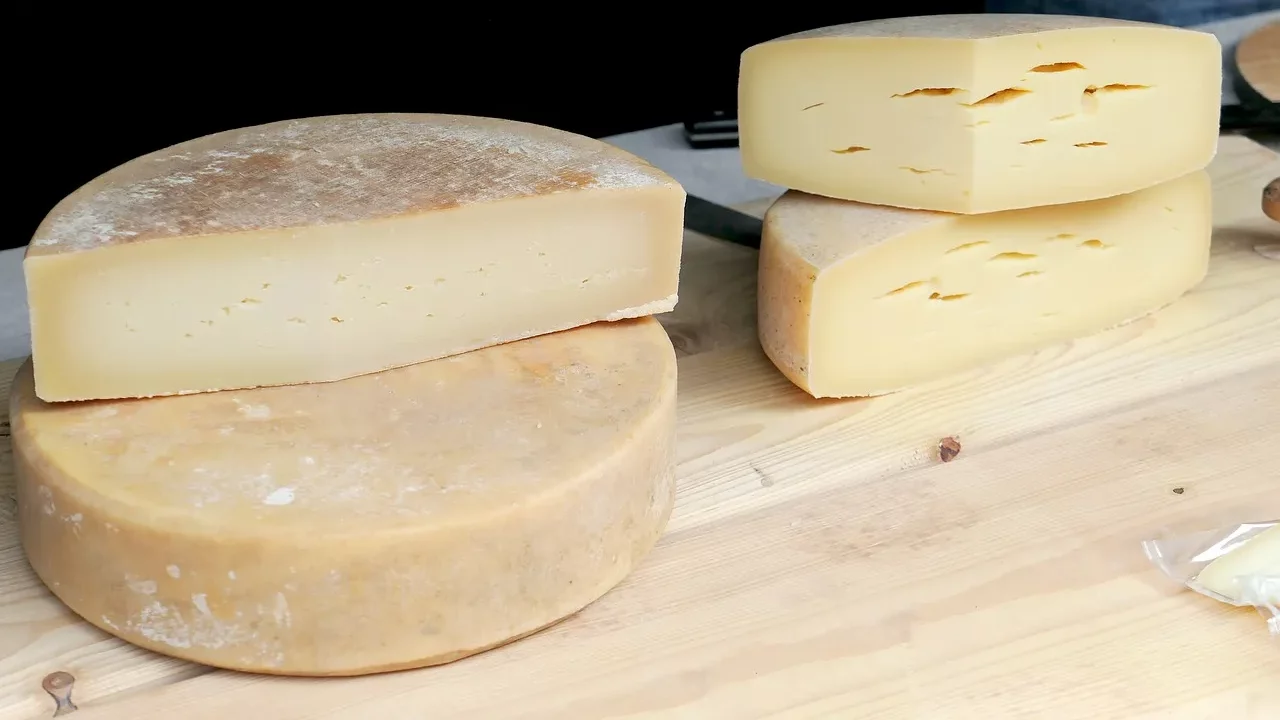
Gouda offers a smoky richness to pizzas, with its older varieties introducing a deeper flavor profile. The smoky notes of Gouda blend perfectly with robust pizza toppings, such as sausage or pepperoni, enhancing the overall flavor complexity.
Its creamy yet firm texture allows for a smooth melt that envelops the toppings in a rich, flavorful embrace. Incorporating Gouda into pizza recipes invites a unique culinary adventure, distinguishing our pizza with its distinctive taste and aroma.
- Source of Milk: Crafted from cow’s milk, offering a rich and buttery flavor profile.
- Texture: Smooth and creamy texture that melts beautifully over the pizza, creating a decadent and indulgent topping.
- Melting Ability: Melts evenly, forming a golden brown crust on top of the pizza while maintaining a creamy interior.
- Stretchiness: Offers moderate stretchiness, providing a satisfying cheese pull and a luxurious mouthfeel.
- Flavor Balance: Boasts a nutty and slightly sweet flavor profile, adding depth and complexity to the pizza.
- Moisture Content: Moderate moisture content, ensuring a moist and flavorful pizza experience.
9. Pecorino Romano

Pecorino Romano is known for its sharp, salty flavor and ability to add an extra layer of umami to pizzas. This hard, Italian cheese acts as a flavor enhancer, elevating the taste of the tomato sauce and toppings with its bold, savory profile.
Its robust character makes it an excellent choice for pizzas that feature simpler toppings, allowing the cheese’s intricate flavors to shine. Adding Pecorino Romano to our pizza guarantees a rich, deeply satisfying culinary experience that tantalizes the taste buds.
- Source of Milk: Crafted from sheep’s milk, offering a bold and savory flavor.
- Texture: Granular and crumbly texture that adds a delightful crunch to the pizza.
- Melting Ability: Does not melt like other cheeses, but instead browns beautifully, providing a crispy and savory topping.
- Stretchiness: Not known for its stretchiness, but offers a unique texture and depth of flavor.
- Flavor Balance: Boasts a sharp and tangy flavor profile with salty undertones, adding complexity and intensity to the pizza.
- Moisture Content: Low moisture content, resulting in a concentrated and robust flavor experience.
10. Monterey Jack Cheese
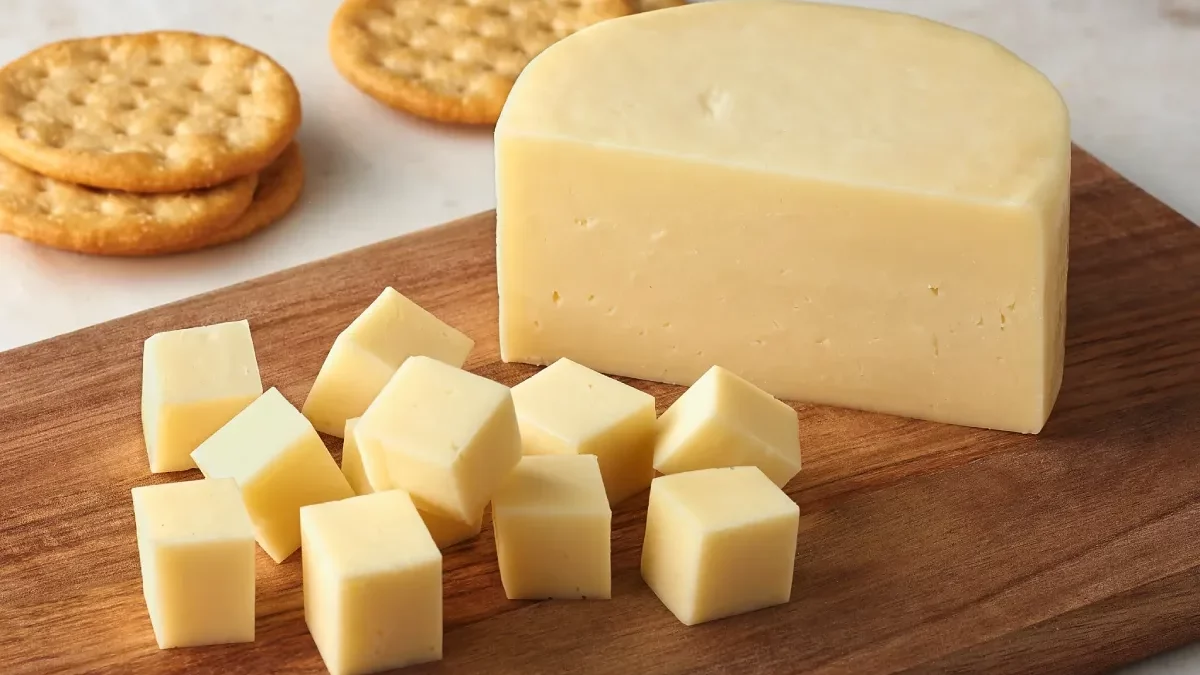
Monterey Jack, with its mild flavor and excellent melting properties, is a versatile choice for pizza. Its creamy texture and subtle taste make it an ideal base for layering flavors, especially when combined with more assertive cheeses or a variety of toppings.
The meltability of Monterey Jack ensures a gooey, delicious cheese layer that complements every component of the pizza, from the crust to the very last topping. Whether we’re aiming for a classic pizza or experimenting with flavors, Monterey Jack adapts effortlessly, providing a smooth, uniform melt that enhances the pizza without overwhelming other ingredients.
- Source of Milk: Crafted from cow’s milk, offering a mild and creamy flavor.
- Texture: Smooth and velvety texture that melts beautifully over the pizza, creating a smooth and luscious topping.
- Melting Ability: Melts smoothly, forming a golden brown crust on top of the pizza while maintaining a creamy interior.
- Stretchiness: Offers moderate stretchiness, providing a satisfying cheese pull and a luxurious mouthfeel.
- Flavor Balance: Boasts a mild and buttery flavor profile, allowing the flavors of the toppings to shine through.
- Moisture Content: Moderate moisture content, ensuring a moist and delightful pizza experience.
Tips for Making Homemade Pizza with the Best Cheese
Select the Right Cheese Based on Pizza Type
Choosing what is the best cheese for pizza is crucial and varies significantly depending on the type of pizza we’re aiming to create. For classic Neapolitan pizzas, fresh mozzarella is our go-to, with its delicate flavor and beautiful melting characteristics that honor tradition.
For a New York-style pizza, consider a blend of mozzarella and provolone for that iconic stretch and fuller flavor profile. If we’re venturing into deep-dish territory, a combination of mozzarella for creaminess and cheddar or Parmesan for a sharper taste can create a more complex flavor.
Adjust Cheese Quantities for Optimal Results
The quantity of cheese can transform our pizza from good to great. A general rule of thumb is to use about 3 ounces of cheese for a 12-inch pizza to achieve a balanced coverage without overwhelming the crust and toppings. However, this can vary based on personal preference and the type of cheese used.
For richer, more flavorful cheeses like blue cheese or goat cheese, consider using less to prevent their strong flavors from dominating. On the other hand, milder cheeses like mozzarella or Monterey Jack can be used more liberally to achieve a gooey, indulgent layer.
Conclusion
Each cheese brings its own set of characteristics to the table—meltability, flavor, and moisture content—all of which play crucial roles in crafting the perfect pizza experience. We encourage to not only rely on the classic choices but also to venture into the realm of experimentation and personal taste exploration.
Remember, the right cheese can elevate our pizza from merely good to truly unforgettable. So, embrace the diversity of pizza cheeses and embark on a flavorful journey to discover the perfect match, enhancing every bite with the ideal blend of texture, taste, and aroma that you can find on our pizza place, HomeSlyce , for the perfect pizza experience.
Frequently Asked Questions (FAQ)
- What is the best cheese for pizza?
- Mozzarella is the most traditional choice, known for its meltability and stretchiness. Other popular options include provolone, cheddar, Parmesan, and Fontina. Mozzarella is typically the cheese of choice for its excellent melting properties.
- Are there any alternative cheeses that work well on pizza for those with dietary restrictions?
- Yes, there are vegan cheeses made from nuts or soy that can be suitable for those with dietary restrictions.
- How can I ensure that the cheese I select enhances the flavor and texture of my pizza?
- Experiment with different cheeses and combinations to find the flavors and textures that you enjoy most on your pizza.
- Are there any tips for combining different types of cheese to create the perfect pizza blend?
- Mix cheeses with different meltability and flavor profiles to create a balanced and flavorful blend. Mixing and matching different cheeses based on the insights provided can transform our homemade pizza into an extraordinary culinary masterpiece.
- What are some common mistakes to avoid when choosing cheese for pizza?
- Avoid using cheeses that don’t melt well or overpower the other ingredients on your pizza.
- Where can I find high-quality cheese for making pizza?
- Look for reputable cheese shops, specialty grocery stores, or online retailers that offer a variety of high-quality cheeses suitable for pizza making.

